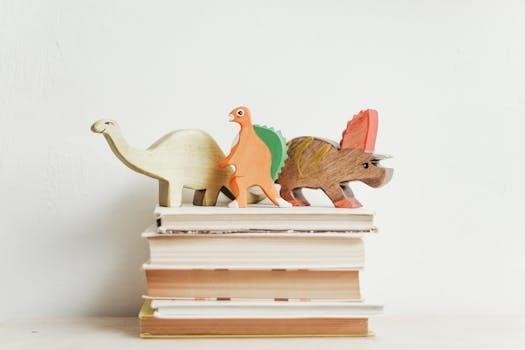
Overview of “Wonder”
R.J. Palacio’s “Wonder”, a middle-grade novel published in 2012, tells the story of August Pullman. It’s a
heartwarming exploration of kindness and acceptance. The narrative invites readers to consider themes of empathy and the impact of appearances.
About the Novel
“Wonder” is a contemporary children’s novel penned by R.J. Palacio, released in 2012. It is inspired by an incident involving the author’s son and a girl with a facial difference. The book explores themes of acceptance, empathy and the power of kindness. It’s a story that encourages readers to look beyond appearances. The novel is told from multiple perspectives, allowing the reader to gain a deeper understanding of the characters and their experiences. The book has received great critical acclaim and is a New York Times Bestseller. The novel’s influence has been further amplified through a major motion picture adaptation, bringing the story to a wider audience. The narrative focuses on a young boy’s journey as he navigates the world with a facial difference. It’s a story that resonates with many, promoting a message of compassion. The novel is also used in educational settings to promote discussions on empathy.
Publication Details and Genre
“Wonder” was published on February 14, 2012, by Alfred A. Knopf. It is classified as a middle-grade novel, suitable for young readers, typically between the ages of 8 and 12. The book falls under the fiction genre, specifically contemporary realistic fiction. The novel has gained recognition as a 1 New York Times Bestseller. It has become a popular choice for classroom reading and book clubs. It’s a story that has resonated with a broad audience, from young readers to adults. The novel’s publication marked the beginning of its journey into the hearts of many readers worldwide. The book has also been adapted into a major motion picture, further expanding its reach. “Wonder” is considered to be a significant work in the middle-grade genre. It addresses social issues and promotes important values. It is a story that is both engaging and thought-provoking. It has been studied and analyzed in various academic and educational settings.

Plot Summary
“Wonder” follows August Pullman’s journey as he enters mainstream school for the first time. The story explores his challenges, friendships, and growth throughout the school year.
August “Auggie” Pullman is introduced as a ten-year-old boy who is different from most children. Born with a severe craniofacial deformity, Auggie has spent his life being homeschooled, shielded from the stares and judgments of the outside world. The novel establishes that Auggie has undergone numerous surgeries to try and correct his condition, but his face remains noticeably different, causing people to react with shock and discomfort. Auggie, while acknowledging that his appearance is unusual, considers himself a normal kid on the inside, a boy who loves video games and riding his bike. He longs for acceptance and normalcy but knows that his face often creates a barrier to those desires. Despite this, he has developed a sense of humor and inner resilience that helps him navigate the challenges he faces. He is the heart of the story, and his perspective allows readers to see the world through his unique lens. The reader quickly learns that Auggie’s journey is not just about fitting in, but about how he shapes the views of those around him.
August’s Transition to School
Auggie’s transition to Beecher Prep Middle School marks a significant turning point in his life. After years of homeschooling, he is thrust into a mainstream environment where he must navigate the social complexities of middle school. This transition is a major source of anxiety for Auggie, as he is aware that his appearance will make him stand out among his peers. He is initially hesitant but ultimately decides to face his fears and try to fit in. The school environment presents new challenges, from navigating the hallways to finding a place in the lunchroom. Auggie’s first day at school is a trial by fire, with stares, whispers, and outright rudeness becoming commonplace. Despite the initial difficulties, Auggie’s transition to school is not just about surviving; it is about learning to build friendships and discovering his own strengths. This move forces him to interact with people outside of his immediate family, and it will teach him important lessons about acceptance and resilience.

Challenges and Bullying Faced
Auggie faces significant challenges and bullying due to his facial difference. The stares and whispers from other students are constant reminders of his perceived abnormality. Some classmates openly mock him, making his school days difficult. He experiences exclusion and isolation, finding it hard to integrate into the social circles of the school. The bullying goes beyond mere teasing, with some students actively targeting him. He also encounters the more subtle forms of unkindness, such as being avoided and excluded from group activities. These experiences make Auggie question his self-worth and feel deeply insecure. He struggles with the emotional impact of being constantly judged and mistreated. The challenges he faces are not just physical but also deeply emotional, testing his resilience and forcing him to confront the harsh realities of prejudice. The novel doesn’t shy away from showing the painful effects of bullying on a child’s self-esteem and sense of belonging.
Friendships and Support
Despite the bullying, Auggie finds solace in genuine friendships and supportive relationships. He forms a strong bond with Jack Will, who initially struggles to accept Auggie’s appearance but ultimately becomes a loyal friend. Summer Dawson also plays a crucial role, befriending Auggie when others avoid him, showing kindness and understanding. These friendships provide Auggie with a sense of belonging and acceptance that he desperately needs. His family, especially his sister Via, offers unwavering love and encouragement. They help him navigate the challenges of school and understand his worth beyond his appearance; The support system around Auggie is vital to his emotional well-being. He learns the importance of having people who see him for who he truly is, not just how he looks. These friendships and family bonds are essential to his personal growth and resilience. The support he receives helps him overcome the negativity he experiences.
Growth and Acceptance
Throughout the school year, Auggie experiences significant personal growth. He begins as a shy and insecure boy, but his experiences at school help him discover his inner strength. He learns to navigate social situations and confront prejudice, ultimately becoming more confident. He also realizes that he is not defined by his appearance, and he accepts himself for who he is. His journey towards self-acceptance is an important aspect of the novel. The acceptance he finds from his friends and family is also an important catalyst for his growth. It encourages him to embrace his differences and understand his value as an individual. The story emphasizes the idea that acceptance from others is important for fostering personal growth. It shows that when people are valued for who they are, they are better able to thrive and reach their full potential. Auggie’s journey is a testament to the power of self-acceptance and the impact of external validation.

Themes and Analysis
“Wonder” delves into themes of empathy, kindness, and the impact of appearance. The novel explores how these themes affect August’s life and his relationships with others. It encourages the reader to look beyond the surface.

Themes Explored in the Novel
“Wonder” intricately weaves together several key themes, primarily focusing on the power of empathy and the importance of kindness. The novel explores the challenges of self-acceptance, particularly when facing differences in appearance. It examines the impact of bullying and discrimination on individuals and communities. The narrative also highlights the significance of friendship and support systems in overcoming adversity. Furthermore, “Wonder” delves into the complexities of family dynamics, portraying how they contribute to a child’s growth and resilience. The book encourages readers to look beyond physical appearances and to understand the importance of inner beauty. It celebrates the ability of individuals to change perceptions and to cultivate a culture of inclusivity and acceptance. The exploration of these themes in “Wonder” provides both young readers and adults with valuable insights into human nature and social dynamics. It is a reminder that true strength often comes from embracing differences.
Empathy and Kindness
“Wonder” places a strong emphasis on the transformative power of empathy and kindness. The novel encourages readers to step into the shoes of others, particularly those who face challenges due to their appearance or differences. It explores how acts of compassion can have a profound impact on individuals and communities. The narrative highlights the importance of looking beyond surface appearances and understanding the inner struggles and feelings of others. The characters in “Wonder” demonstrate both the positive and negative effects of empathy, illustrating how kindness can foster inclusion and understanding. Conversely, the lack of empathy is shown to breed prejudice and isolation. This section delves into how empathy and kindness are not just abstract ideals but practical tools that can shape personal relationships and social dynamics. “Wonder” serves as a reminder that small acts of kindness can make a significant difference in the lives of others, and it inspires readers to be more compassionate and understanding.
The Impact of Appearance
The novel “Wonder” delves into the profound impact that physical appearance can have on an individual’s life and experiences. August Pullman, the central character, is born with a facial difference that causes others to react with shock and discomfort. The narrative explores how these reactions lead to prejudice, discrimination, and isolation. The story highlights how society often judges individuals based solely on their outward appearance, failing to recognize the inner person. The book also examines how Auggie’s appearance affects his own self-perception and his relationships with others. Through Auggie’s experiences, “Wonder” reveals the superficiality of judging people based on looks and emphasizes the importance of looking beyond appearances. It also showcases how societal biases can create barriers and hinder opportunities for those who look different. The novel encourages readers to challenge their own prejudices and to value people for their inner qualities rather than their physical attributes. It ultimately underscores that true beauty lies within.
“Wonder” concludes with Auggie receiving an award for his courage and kindness. The novel emphasizes that despite challenges, positive change and acceptance are possible. It ends with Auggie’s mother calling him a wonder.
The End of Auggie’s School Year
As the school year concludes, Auggie’s journey of growth and acceptance culminates in a significant way. He receives a special award at graduation, recognizing his exceptional courage and the profound impact of his kindness on the school community. This moment showcases how far he has come since the start of the year, when he was hesitant and unsure of his place in a mainstream school environment. Auggie has developed a solid group of friends who truly value him for who he is, beyond his physical appearance. He now feels comfortable and secure in his own skin, a stark contrast to his initial feelings of isolation and insecurity. The novel’s ending is heartwarming and affirms the positive change that has occurred in both Auggie’s life and in the lives of those around him. The school year was a testament to his strength and the power of kindness, concluding with a powerful moment of affirmation from his mother.